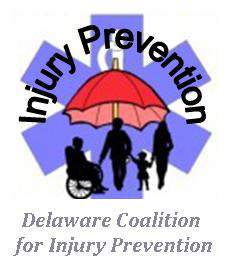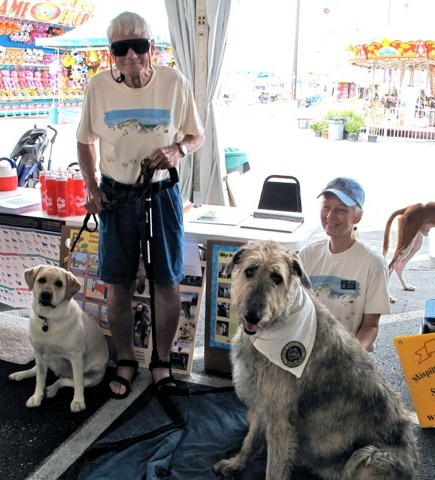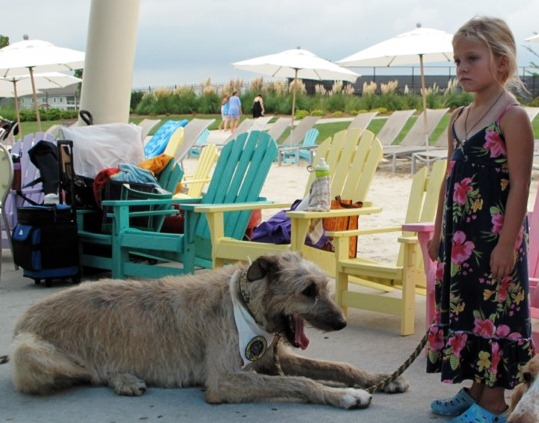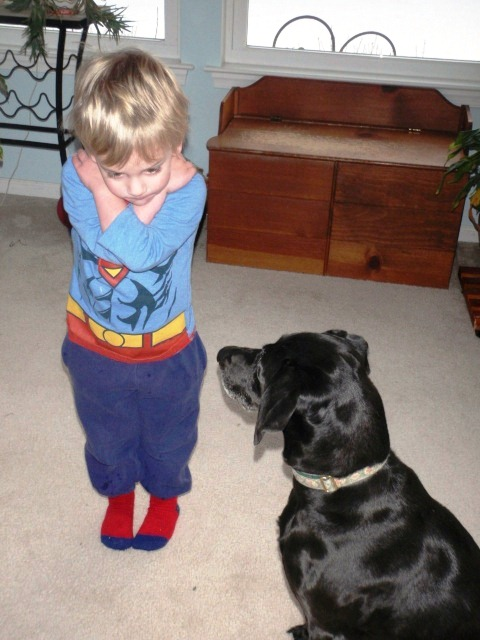
PREVENTION TEAMS:
Dog Bites Prevention Team
Dog Bites - What's the Issue?
- About 4.5 million people are bitten by dogs each year.
- Almost 1 in 5 of those who are bitten, about 885,000, require medical attention for dog bite-related injuries; half of these are
children.
- Although these statistics may seem overwhelming, there is a lot you can do to help prevent dog bite-related injuries. Visit our
Frequently Asked Questions to learn more.
Frequently Asked Questions
 How
Many Dog Bites Were Reported in Delaware Last Year?
How
Many Dog Bites Were Reported in Delaware Last Year?
 Are
There Certain Types of Dogs That Are More Likely to Bite?
Are
There Certain Types of Dogs That Are More Likely to Bite?
 Why
Might a Dog Bite?
Why
Might a Dog Bite?
 What
Age Group is Most Likely to be Bitten by a Dog?
What
Age Group is Most Likely to be Bitten by a Dog?
 What
Can I Do to Prevent My Child From Being Bitten by a Dog?
What
Can I Do to Prevent My Child From Being Bitten by a Dog?
 What
Should I Teach My Child to Do if Approached by an Unfamiliar Dog?
What
Should I Teach My Child to Do if Approached by an Unfamiliar Dog?
 Helpful Tips for Dog Owners: What Can I do to Prevent My Dog From Biting?
Helpful Tips for Dog Owners: What Can I do to Prevent My Dog From Biting?
 To
Whom Do I Report a Dog Bite?
To
Whom Do I Report a Dog Bite?
 How Many Dog Bites Were Reported in Delaware Last Year?
How Many Dog Bites Were Reported in Delaware Last Year?
- In Delaware, there were 2290 reported animal bites in
2016.
- Breakdown by county:
- Sussex County: 528 (26% of total)
- Kent County 425: (21% of total)
- New Castle County: 1063 (53% of total)
- While these numbers are alarming, the majority of injuries required little or no medical attention.
Source: First State Animal Center and SPCA
 Are there Certain Types of Dogs that are More Likely to
Bite?
Are there Certain Types of Dogs that are More Likely to
Bite?
- No, dogs of any size and any breed have the potential to bite.
- Even the friendliest dogs can react poorly and bite when in an uncomfortable situation.
- Education is the key to bite prevention. A dog bite prevention education booth at the 2013 Delaware State Fair provided information
on how to approach a dog and the importance of body language.
- Responsible pet ownership, including socialization and training of the dog, spaying/neutering, and active supervision of the dog can
decrease the likelihood that a dog will bite.

 Why Might a Dog Bite?
Why Might a Dog Bite?
- Dogs may bite because they are feeling scared, protective, ill, or threatened.

 What Age Group is Most Likely to be Bitten by a Dog?
What Age Group is Most Likely to be Bitten by a Dog?


- Children are the most common victims of serious dog bites.
- Dog bite injuries are the third leading cause of emergency admission of children to hospitals (behind bicycle and baseball/softball
injuries).
- Proximity of a child's face to the dog also increases the likelihood that facial injuries will occur.
- The most vulnerable youngsters are 5 to 9-year-old boys, but smaller children can also be seriously injured.
- Children's natural behaviors, including running, yelling, grabbing, hitting, quick and darting movement and maintaining eye contact,
put them at risk for dog bite injuries.
Source: JAVMA, Vol 218, No. 11, June 1, 2001 Vet Med Today: Canine Aggression Task Force
 What Can I do to Prevent My Child from Being Bitten by a
Dog?
What Can I do to Prevent My Child from Being Bitten by a
Dog?
- Always supervise your child around dogs and teach them what is and is not safe behavior around dogs. This will lower their risk of
being bitten. Even the family pet can bite in certain circumstances. See suggested tips below pictures.


- Safe Behaviors:
- Always ask a dog's owner for permission to pet their dog.
- If the owner says yes, approach the dog slowly and quietly.
- Gently extend out your hand with the fingers curled up in a loose fist and allow the dog to sniff. If the dog backs away, he does
not want to be petted.
- If the dog does not back away, open your hand and slowly pet the dog along his sides or back.
- Move slowly around dogs to avoid startling them.
- Unsafe Behaviors
- Petting a dog over his head or tail. Touching a dog on its head or tail can be frightening for a dog.
- Teasing a dog. Teasing can make a dog feel frustrated or angry, which can lead to a bite.
- Petting a dog through a fence or car window. For many dogs, it is instinctive to protect their property/home (such as a yard or
car).
- Taking away a toy or food from a dog. A dog may become defensive and try to protect its property.
- Sneaking up on a dog that is sleeping or eating or caring for puppies. A dog may bite when frightened or startled.
 What Should I Teach My Child to Do if Approached by an
Unfamiliar Dog?
What Should I Teach My Child to Do if Approached by an
Unfamiliar Dog?

- Remain motionless. "Be a Tree." Be still. Keep your arms crossed, close to body, no direct eye contact, look down. "Keep your
branches in and look at your roots." See photo at right.
- If knocked over by a dog, roll into a ball and be still.
- Avoid direct eye contact with a dog.
- Do not run from a dog or scream.
- When the dog loses interest, slowly back away until the dog is out of sight.
Source: Centers for Disease Control Dog
Bite Prevention Page
 Helpful Tips for Dog Owners: What Can I do to Prevent My
Dog from Biting?
Helpful Tips for Dog Owners: What Can I do to Prevent My
Dog from Biting?
- Provide love and companionship to your dog every single day, not just when it is convenient.
- Give your dog plenty of regular exercise and interactive playtime each day.
- Use gentle training methods (i.e. positive reinforcement) to prevent unwanted behaviors and teach your dog alternative, desirable
behaviors.
- i.e. Praise your dog for good behavior and immediately reward with healthy treats.
- Socialize your dog. Help your dog become a good citizen by exposing him to a variety of experiences, people and places and rewarding
him for appropriate behavior.
- Ensure your pet receives regular veterinary care, including vaccinations and annual exams.
- Provide for your dog's basic needs, including food, water and shelter.
- Keep your dog on a leash when he is not in a completely enclosed, secure fenced-in area.
- Make sure your pet is licensed in compliance with state, county or local ordinances.
- Make a commitment to your pet by working through any behavior problems, with help from professionals when necessary.
- Consider your dog's needs when making lifestyle changes.
- Spay or neuter your dog.
Source: www.delawarehumane.org
 To Whom Do I Report a Dog Bite?
To Whom Do I Report a Dog Bite?
Return to Top
- If bitten by a dog, and the person is treated at a health facility
- The health care facility will file a dog-bite report with Delaware Health and Social Services (DHSS).
- If bitten by a dog and the person is not treated at a health facility, but wants to file a dog bite report
- Call the First State Animal Center and SPCA at 888-352-7722 and give the pertinent information to the Animal Control Officer.
- Immediately report stray dogs or dogs displaying unusual behaviors.
- Additional resources about reporting a dog-bite are:
 Please note: Some of the files available on this page are in Adobe PDF format which requires Adobe Acrobat Reader. A free copy of Adobe Acrobat Reader can be downloaded directly from Adobe . If you are using an assistive technology unable to read Adobe PDF, please either view the corresponding text only version (if available) or visit Adobe's Accessibility Tools page.
Please note: Some of the files available on this page are in Adobe PDF format which requires Adobe Acrobat Reader. A free copy of Adobe Acrobat Reader can be downloaded directly from Adobe . If you are using an assistive technology unable to read Adobe PDF, please either view the corresponding text only version (if available) or visit Adobe's Accessibility Tools page.

 How
Many Dog Bites Were Reported in Delaware Last Year?
How
Many Dog Bites Were Reported in Delaware Last Year?
 Are
There Certain Types of Dogs That Are More Likely to Bite?
Are
There Certain Types of Dogs That Are More Likely to Bite?
 What
Age Group is Most Likely to be Bitten by a Dog?
What
Age Group is Most Likely to be Bitten by a Dog?
 What
Can I Do to Prevent My Child From Being Bitten by a Dog?
What
Can I Do to Prevent My Child From Being Bitten by a Dog?
 What
Should I Teach My Child to Do if Approached by an Unfamiliar Dog?
What
Should I Teach My Child to Do if Approached by an Unfamiliar Dog?
 Helpful Tips for Dog Owners: What Can I do to Prevent My Dog From Biting?
Helpful Tips for Dog Owners: What Can I do to Prevent My Dog From Biting?
 To
Whom Do I Report a Dog Bite?
To
Whom Do I Report a Dog Bite?
 How Many Dog Bites Were Reported in Delaware Last Year?
How Many Dog Bites Were Reported in Delaware Last Year?
 Are there Certain Types of Dogs that are More Likely to
Bite?
Are there Certain Types of Dogs that are More Likely to
Bite?

 Why Might a Dog Bite?
Why Might a Dog Bite?

 What Age Group is Most Likely to be Bitten by a Dog?
What Age Group is Most Likely to be Bitten by a Dog?


 What Can I do to Prevent My Child from Being Bitten by a
Dog?
What Can I do to Prevent My Child from Being Bitten by a
Dog?


 What Should I Teach My Child to Do if Approached by an
Unfamiliar Dog?
What Should I Teach My Child to Do if Approached by an
Unfamiliar Dog?

 Helpful Tips for Dog Owners: What Can I do to Prevent My
Dog from Biting?
Helpful Tips for Dog Owners: What Can I do to Prevent My
Dog from Biting?
 To Whom Do I Report a Dog Bite?
To Whom Do I Report a Dog Bite?
![]() Please note: Some of the files available on this page are in Adobe PDF format which requires Adobe Acrobat Reader. A free copy of Adobe Acrobat Reader can be downloaded directly from Adobe . If you are using an assistive technology unable to read Adobe PDF, please either view the corresponding text only version (if available) or visit Adobe's Accessibility Tools page.
Please note: Some of the files available on this page are in Adobe PDF format which requires Adobe Acrobat Reader. A free copy of Adobe Acrobat Reader can be downloaded directly from Adobe . If you are using an assistive technology unable to read Adobe PDF, please either view the corresponding text only version (if available) or visit Adobe's Accessibility Tools page.